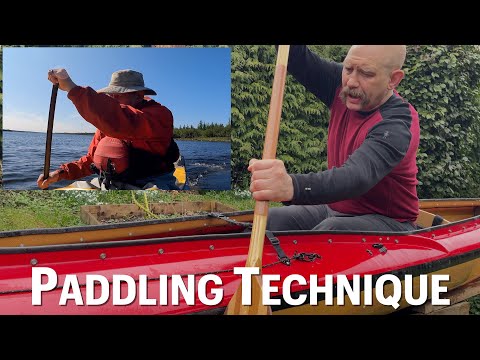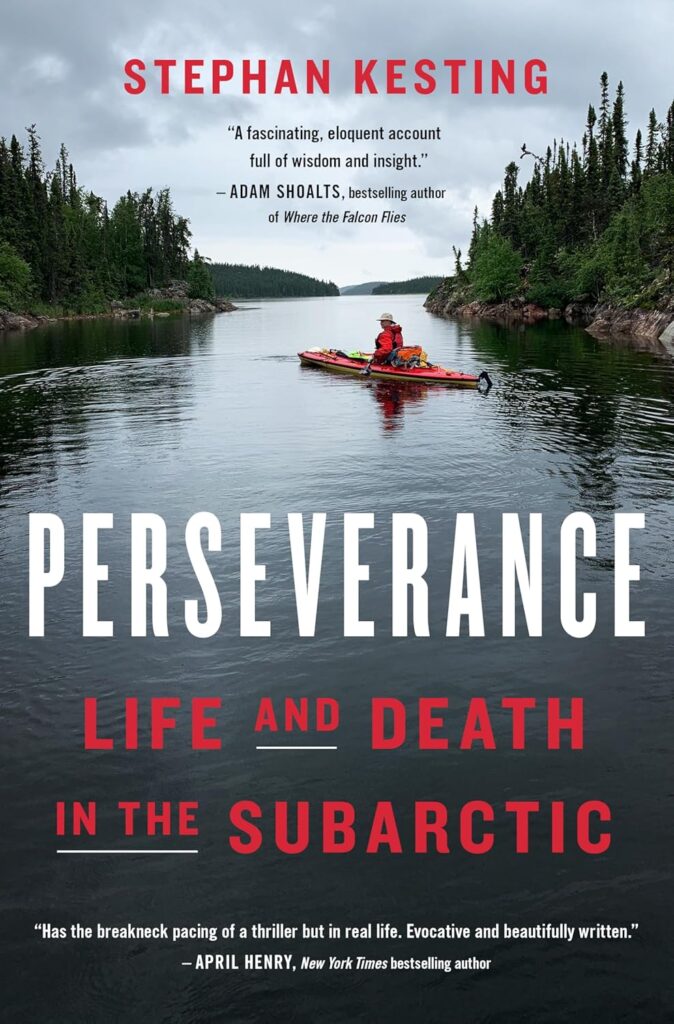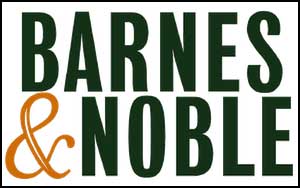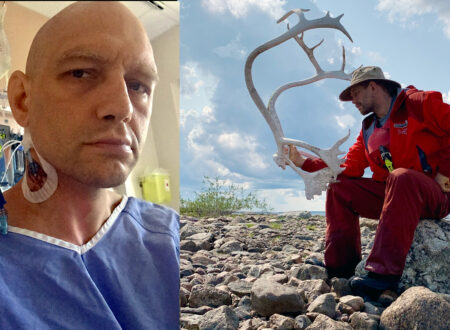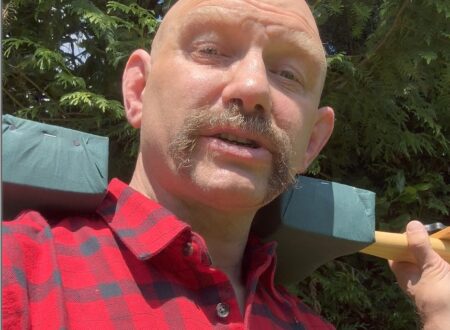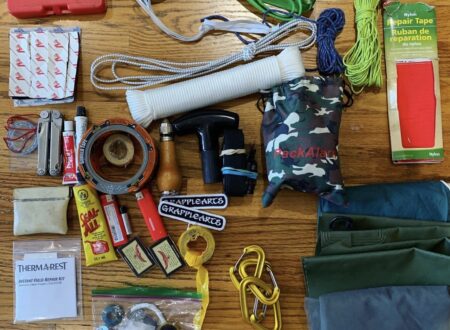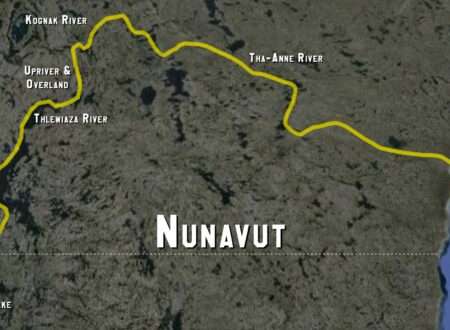In my paddling career I’ve spent a ton of time paddling into headwinds and crossing gigantic lakes, stroke after endless stroke. And that’s given me a ton of time to think about and experiment with different paddle strokes, trying to find the one that maximised power and minimised fatigue.
This video summarises my findings about finding an efficient paddle stroke for wilderness canoe trips…
The four stages I’ve gone through to make my stroke more efficient and sustainable include…
Arms Only
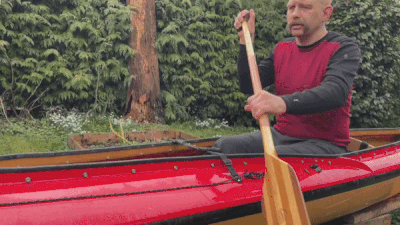
- Most people start out paddling using the small muscles of their arms like the biceps, forearms and shoulders.
- Small muscles fatigue quickly, making this the least efficient style of paddling.
Some Torso Rotation
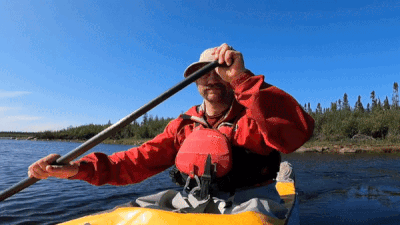
- Eventually as people become more comfortable with in the boat and find their rhythm they start slightly rotating their upper body as they paddle.
- This is good because it starts involving the larger muscles of the torso including the lats and the abdominal muscles. Larger muscles give you more power and don’t tire as quickly
Significant Torso Rotation
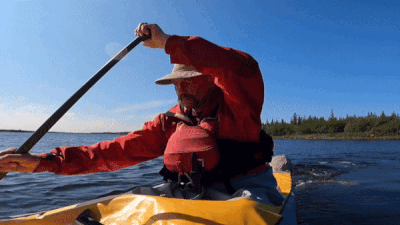
- This has been proven by marathon paddlers, whitewater competitors, OC 1 racers and dragon boaters to be the most efficient and powerful way to paddle.
- You might think that the stroke of marathon paddlers and elite whitewater paddlers would look very different (after all, one type marathon stroke has to be maintained at a high cadence for hour after hour whereas whitewater paddling tends to occur in shorter, much more intense bursts). However both types of paddlers use torso rotation to generate power and the arms are basically almost straight for the majority of the power phase of the stroke.
- In this style of stroke the paddle typically only travels a short distance but this allows you to maintain a much higher stroke rate than the usual lackadaisical stroke most people use.
Forward Torso Hinge
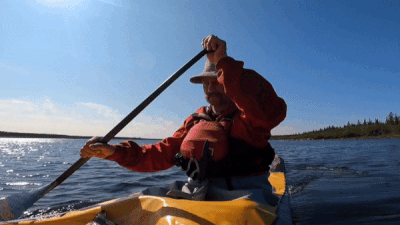
- As effective as torso rotation is I found that extended use of this motion exacerbated pre-existing back problems so I started thinking about other ways to use torso to power my strokes. I think it was about halfway up Reindeer Lake’s 230 km length that I started experimenting with using a forward torso hinge, and I found it worked fairly well.
- Maintaining a straight back and hinging at the hips allows you to generate force that can then be transmitted to the paddle with fairly straight arms. I think of this technique as the exact opposite of a kettlebell swing.
- Give this style of paddling a try and maybe it’ll help you get across a lake one day when your back is too sore to paddle conventionally!
More Paddling Stuff…
If you like wilderness canoeing then I have a couple of suggestions for you…
1, Get Notified When My Book Comes Out
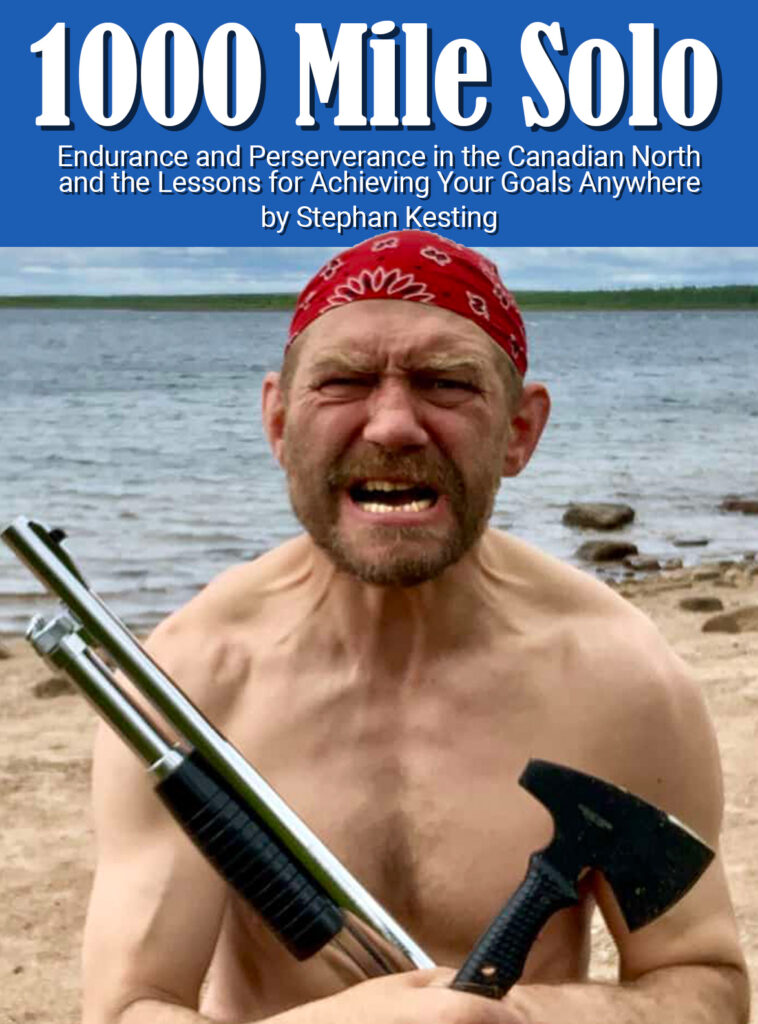
I’ve been working on a book about solo wilderness canoeing and the lessons that it taught me for dealing with adversity. It’s tentatively titled 1000 Mile Solo, and you can get on the early notification list for that book at the bottom of this page here.
2, Subscribe to My Youtube Channel

The Essential Wilderness Youtube channel is small but growing. If you could whip over there, check out the videos, and subscribe it would be a big vote of encouragement to produce more videos for you.
3, Check Out The Strenuous Life Podcast
I run The Strenuous Life Podcast and I really like picking the brains of various outdoor experts on it. Click here to check out some of the outdoor episodes.
Thanks so much,
Stephan Kesting
CHECK OUT MY NEW BOOK, PERSEVERANCE, LIFE AND DEATH IN THE SUBARCTIC!
Perseverance, Life and Death in the Subarctic, is the story of my 42-day solo expedition across the Canadian Subarctic after coming back from the brink of death. On this trip, I encountered bears, storms, forest fires, and raging rapids, and had to find new ways to unlock new levels of endurance and tenacity.
I’ve been told it’s a great adventure story, has lots of useful tips and tricks for the outdoors, and is an inspiring read as well. I’d be honoured if you check it out at the bookstore of your choice or at the links below…


